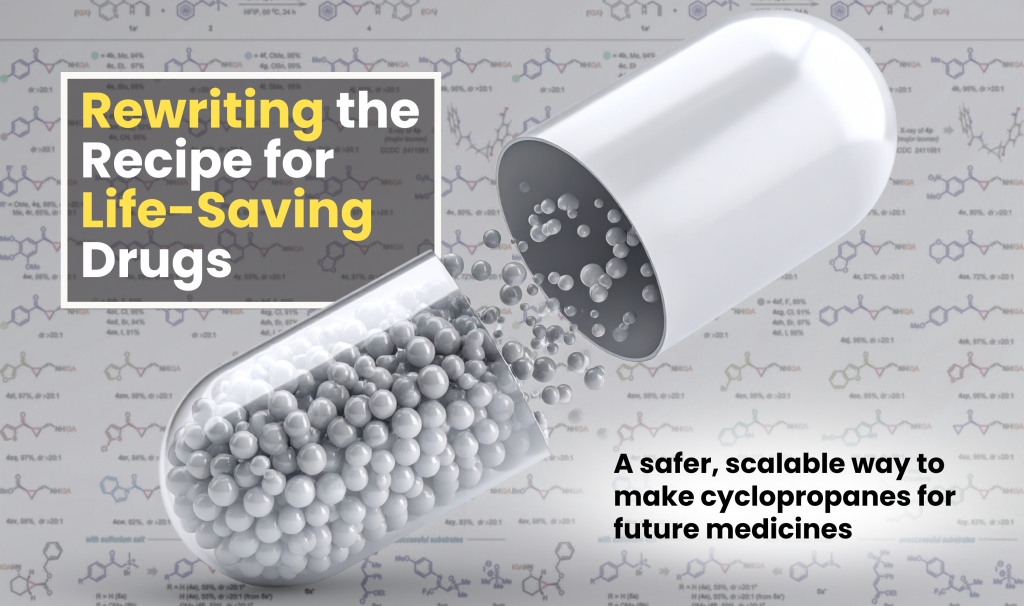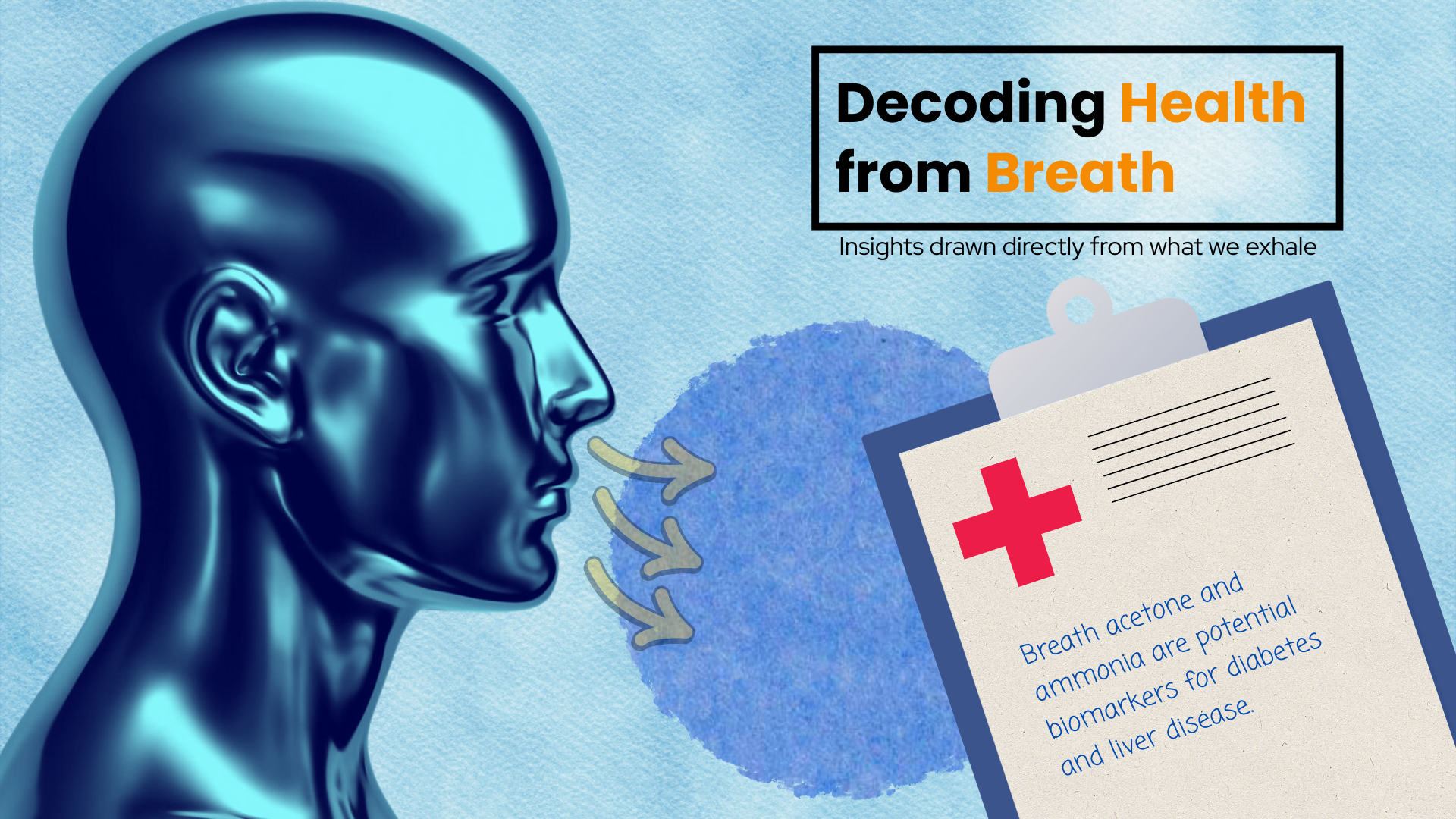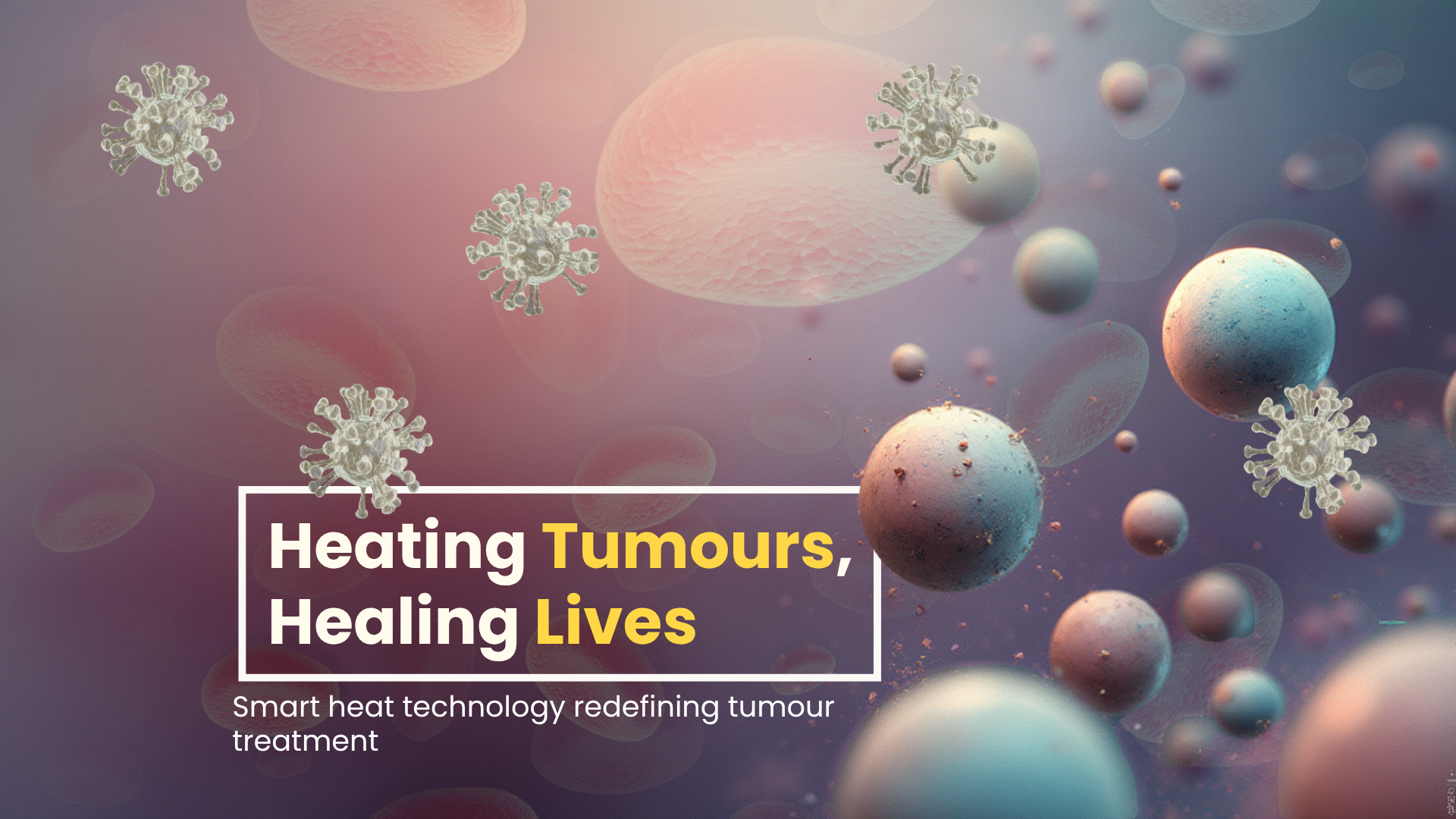
When it comes to usage in pharmaceuticals, cyclopropanes are one of the most sought after group of compounds. Cyclopropanes are a class of organic compounds (organic chemistry deals with the study of carbon and its compounds) that have a three-membered ring, with three carbon atoms, each bonded to two hydrogen atoms or organic substituents.
The reason why cyclopropanes are so sought after for the preparation of medications like tablets, is because their strained ring structure can alter the molecule’s shape and binding properties. Their ability to affect biological pathways makes them commonly found in antibiotics, antivirals, and anticancer agents. This is why cyclopropane is the second most prevalent alicyclic ring in small-molecule pharmaceuticals.
There is therefore a lot of interest in synthesizing cyclopropanes from readily available starting materials under mild conditions.
Use of alkenes/olefins (a compound with a double bond between two carbon atoms in its structure) to produce cyclopropanes is highly rewarding. The most extensively investigated method is the (2 + 1) cyclization of an alkene with a carbene (carbene is a highly reactive intermediate in organic chemistry that contains a neutral carbon atom.). But this requires the employment of reactive precursors like diazoalkanes. Unfortunately, diazoalkanes are explosive, toxic, and challenging to obtain. There is therefore a need for another method to produce cyclopropanes.
A reaction known as the Michael-initiated ring closure (MIRC) reaction, along with sulfoxonium ylides had attracted the interest of the authors of this study.
The MIRC reaction is a synthetic organic reaction that combines a Michael addition [in Michael addition, a nucleophile adds to an electron-deficient alkene. (A nucleophile is a chemical that donates an electron pair to form a chemical bond)], with a subsequent intramolecular nucleophilic ring closure, often used to form cyclopropanes and other small ring systems.
Sulfoxonium ylides are organic compounds that contain a double bond between a sulphur atom and an oxygen atom. They have a dipolar or zwitterionic nature. This means that they have both a positive charge and a negative charge. They react with alkenes to form cyclopropanes. Sulfoxonium ylides are easier to handle than diazo compounds and are more stable, which makes them widely used in modern organic synthesis. However, the use of sulfoxonium ylides is not yet extended to unactivated alkenes.
To overcome these problems, the authors Mr. Nityananda Ballav, Dr. Chandan Kumar Giri, Mr. Shib Nath Saha, and Prof. Mahiuddin Baidya from the Department of Chemistry, Indian Institute of Technology (IIT) Madras, Chennai, India, and Dr. Manoj V. Mane from the Centre for Nano and Material Sciences, Jain (Deemed-to-be University) Bangalore, Bengaluru, India, have looked into a reaction known as the nucleopalladation reaction, along with sulfoxonium ylides as a possible solution.
In a nucleopalladation reaction, palladium (Pd) acts as a catalyst to activate the reaction between a nucleophile and a carbon-carbon multiple bond [like a double (alkene) or a triple (alkyne) bond].
The authors of this study have had a particular interest in unsaturated aliphatic amines (compounds with an NH2 group, or an amine group), and have therefore studied cycloproponation (production of cyclopropanes) of alkenyl amines. These compounds are commonly used in marketed drugs and bioactive compounds.
In the reaction in this study, sulfoxonium ylides with their dipolar nature, play a dual role in facilitating a redox (both reduction and oxidation occurring at the same time) reaction of the palladium catalyst. The alkenyl amine along with the alkene motif facilitated coordination-guided nucleopalladation to generate a more stable intermediate called 5, 5-palladacycle. This intermediate could then be transformed into a Pd (IV) [palladium with valency 4] intermediate through oxidation by the sulfoxonium group, with subsequent reductive elimination leading to the desired cycloproponation product.
However, this reaction comes with numerous problems. Many of the intermediate reactions would affect the stereoselectivity (stereoisomers are compounds with the same molecular formula, but different arrangement of atoms. The rotation of the molecule about its axis is called stereoselectivity) of the cycloproponation reaction.
The oxidation of a Pd (II) [palladium with valency 2] catalyst with an alkyl sulfoxonium salt has till now never been reported in the literature.
In this study, for the first time, a solution has been found to this problem, by delineating the Pd (II)-catalysed diastereoselective cycloproponation of allylamines with sulphur ylides achieving excellent yields of cyclopropane. This strategy was also successful with alkenyl acid derivatives.
The method used here for cycloproponation was found to be simple, mild, scalable, and applicable to a wide variety of substrates, including medicinally relevant scaffolds. Theoretical calculations were performed to study the reaction mechanism and the rationale behind the stereoselective outcomes.

Prof. Varinder K. Aggarwal, Professor in Synthetic Chemistry, from the University of Bristol, UK, confirmed the importance of this work, terming it a “breakthrough” with the following comments: “This paper addresses the challenge of achieving regio- and stereoselective cyclopropanation of unactivated alkenes, a fundamental transformation in organic synthesis. Previously, methods for cyclopropanation of electron rich/neutral alkenes often required reactive precursors like diazoalkanes, which pose safety and accessibility issues. The authors developed a palladium(II)-catalyzed method utilizing stabilized sulfur ylides through a nucleopalladation mechanism, enabling diastereoselective cyclopropanation of alkenyl amines and alkenyl acids under mild conditions. This is a real breakthrough in the field and furthermore the reaction shows highly interesting reactivity. Stabilized sulfur ylides normally cyclopropanate electron deficient alkenes but here they have found conditions where they can be used to cyclopropanate electron rich alkenes. That means that a single reagent, which has a long history, can now be used to cyclopropanate any classes of alkene. The challenge will now be to extend it beyond allylamines. The diastereodivergent control is also notable, since often one needs either syn or anti isomers and they found conditions where one or other can be obtained. Amazing!”
Prof. Uttam Tambar, who is the Bonnie Bell Harding Professor in Biochemistry, and is also the Chair of Organic Chemistry Graduate Program, at the University of Texas Southwestern Medical Center at Dallas, Texas, USA, confirmed the significance of this work by pointing out the important findings of this study with the following comments: “Professor Baidya’s lab has made an exciting advance in synthetic organic chemistry, specifically in the area of stereoselective catalysis. By leveraging the ambiphilic reactivity of sulfur ylides and a Pd(II)/Pd(IV) catalytic cycle, Baidya and co-workers have developed a versatile and operationally simple strategy to access highly functionalized cyclopropanes from unactivated alkenes. They control diastereoselectivity of the reaction by using removable directing groups. They also perform very elegant mechanistic studies that are supported by DFT calculations. This paper will garner the interest of chemists around the world.”
Article by Akshay Anantharaman
Click here for the original link to the paper










